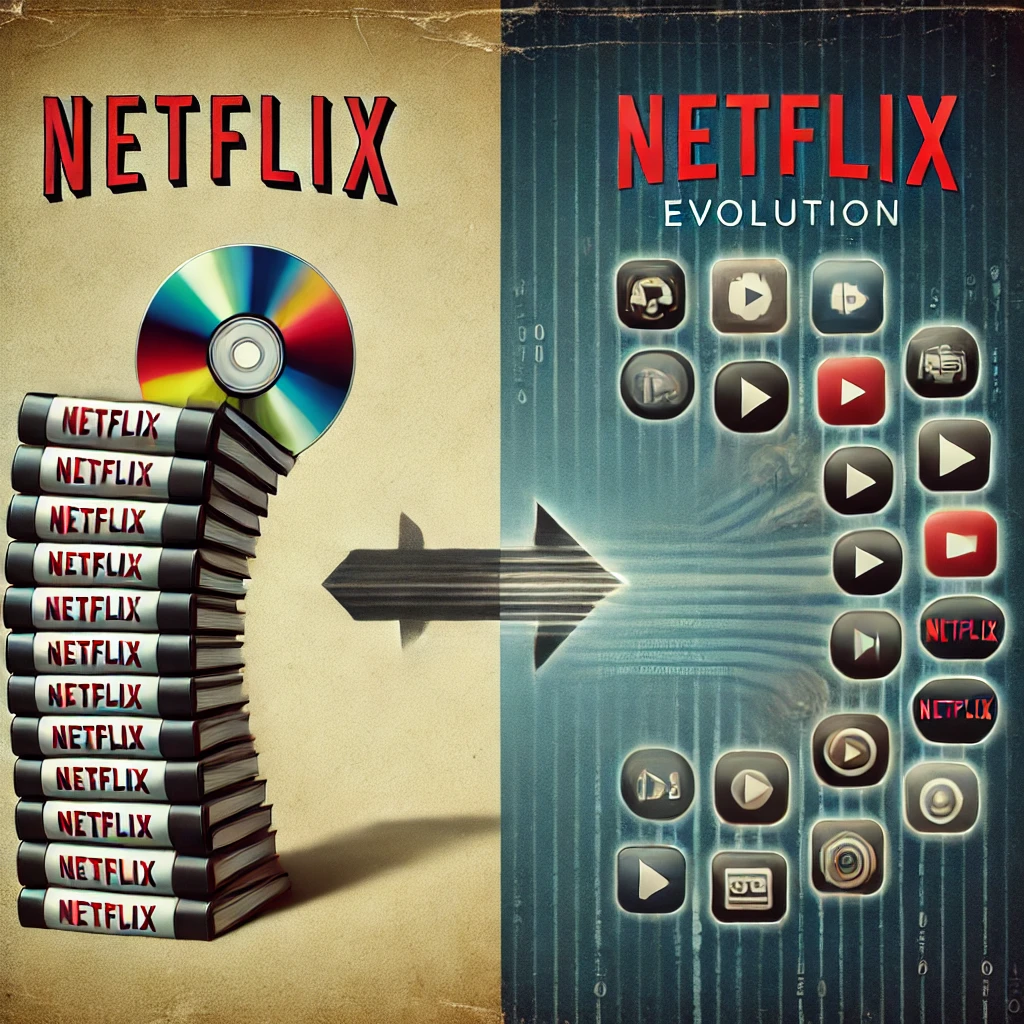In 1997, Netflix started as a simple DVD rental service, delivering movies straight to your doorstep. 📀 Fast forward to today, and Netflix is a global streaming giant with millions of subscribers worldwide. 🌎
Who could have predicted that this small rental business would transform into a dominant force in entertainment? Netflix’s journey is a masterclass in reinvention, agility, and growth. 📈
For startup founders, Netflix’s transformation offers valuable lessons. In this post, we’ll break down the key strategies that helped Netflix evolve and dominate the streaming market. By understanding these tactics, you can apply similar principles to scale your business. 🚀
1. Recognize When to Pivot
Netflix initially focused on renting DVDs by mail—a model that worked well for many years. But as technology evolved and streaming services gained traction, Netflix recognized an opportunity. 💻 While other companies stuck to traditional models, Netflix was quick to pivot. 🚀
This ability to evolve was crucial to their success. Instead of clinging to an outdated business model, they embraced streaming as the future. 📡
Takeaway: Be adaptable. Monitor trends and customer behavior closely. When you see an opportunity, don’t be afraid to pivot your business model. Timing is crucial, and the sooner you adapt, the better your chances of leading the market. 🏆
2. Prioritize Customer Experience
Netflix’s success is rooted in its obsession with customer satisfaction. ❤️ From eliminating late fees to offering a user-friendly streaming interface, Netflix continually optimized the customer experience. 🎧
They understood that keeping the user happy wasn’t just about offering content—it was about how that content was delivered. 💯
Takeaway: Invest in understanding your customers' pain points and design your product or service around solving those issues. Prioritizing customer experience not only improves retention but also builds a loyal customer base. 🔄
3. Data-Driven Decision Making
Netflix is a data-driven company. 📈 From content creation to user interface design, they use data to make decisions that help refine the customer experience. By analyzing what users are watching and when they stop watching, Netflix crafts better recommendations and content. 🎥
This data-first approach has helped Netflix stay relevant, creating a personalized experience for each user. 🧑💻
Takeaway: Leverage data to make informed decisions. Use analytics to track user behavior, preferences, and feedback. This information will help you refine your product, tailor marketing strategies, and ultimately drive growth. 📈
4. Invest in Original Content
One of Netflix’s biggest breakthroughs was investing in original content. 📺 Shows like “House of Cards” and “Stranger Things” helped Netflix differentiate itself from its competitors and attract new subscribers. 🎬
Netflix didn’t just rely on existing content—it became a creator. This strategy transformed Netflix from a streaming service into an entertainment powerhouse. 💥
Takeaway: Create unique value for your customers. Whether it’s exclusive products, innovative services, or content that others can’t offer, find your niche. Investing in what sets you apart can elevate your brand and foster customer loyalty. 💎
5. Scale Globally, Act Locally
As Netflix expanded internationally, they embraced a localized approach. 📱 They offered content tailored to different cultures and languages, ensuring that their global reach resonated locally. 🎥
They didn’t just blanket all markets with the same content—they respected and reflected local cultures and preferences. This helped Netflix succeed in new territories. 🌏
Takeaway: When scaling, customize your approach to each market. Research local needs, preferences, and regulations. Adapt your offerings to resonate with local audiences while maintaining your brand's global identity. 🌐
6. Embrace Technology and Innovation
Netflix has consistently invested in technology to enhance their platform. 💻 From their advanced recommendation algorithm to seamless streaming technology, Netflix set a high bar for the industry. 📡
They were early adopters of cloud computing, which allowed them to scale their infrastructure quickly as the subscriber base grew. ☁️
Takeaway: Invest in technology that supports your business goals. Whether it's improving your product, automating processes, or enhancing customer experience, technological innovation can be a key differentiator. ⚡
7. Foster a Culture of Experimentation
Netflix’s culture encourages risk-taking and experimentation. 🚀 They’re not afraid to test new ideas, learn from failures, and iterate quickly. This approach has helped them stay ahead of trends and rapidly adapt to market changes. 🔄
By continuously testing new formats and content, they’ve built an agile business model that thrives on innovation. 💡
Takeaway: Create a culture where experimentation is encouraged. Test new ideas, gather feedback, and iterate quickly. This will keep your business agile and responsive to changing market conditions. 🏃♂️
8. Understand the Importance of Branding
Netflix’s brand is synonymous with high-quality entertainment. 🎬 They’ve maintained consistent messaging, design, and customer engagement across all channels, building a strong and recognizable brand identity. 💪
Their brand represents not just content, but a lifestyle of convenience, choice, and personalization. 💻
Takeaway: Build a brand that reflects your company’s values and resonates with your audience. Consistency in branding across all touchpoints strengthens your identity and builds trust with your customers. 🏅
9. Keep Evolving
Despite their success, Netflix continues to evolve. From exploring interactive content to entering the gaming market, Netflix is constantly seeking new ways to innovate and stay relevant. 🎮
They aren’t resting on their laurels. Netflix understands that staying static in a fast-paced environment is a surefire way to get left behind. ⏳
Takeaway: Never become complacent. Always be on the lookout for the next big opportunity. Continual evolution is crucial to staying relevant in a fast-moving business environment. 🌟
Final Thoughts
Netflix’s journey from a DVD rental service to a global streaming powerhouse is a testament to the power of innovation, customer focus, and strategic adaptation. 📈
For startups, the lesson is clear: stay adaptable, prioritize your customers, and don’t shy away from bold decisions. 💪
By embracing these principles, you can set your startup on a path to not just survive, but thrive, just like Netflix. 🚀










